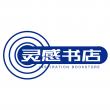
大规模太阳能系统设计:太阳能光伏并网发电工程技术指南:an engineering guide for grid-connected solar power generation
正版保障 假一赔十 可开发票
¥ 37.99 2.0折 ¥ 188 全新
库存49件
广东广州
认证卖家担保交易快速发货售后保障
作者Peter Gevorkian[著]
出版社哈尔滨工业大学出版社
ISBN9787560345055
出版时间2013-06
装帧平装
开本其他
定价188元
货号8255524
上书时间2024-12-23
- 最新上架
商品详情
- 品相描述:全新
- 商品描述
-
作者简介
Peter Gevorkian,Ph.D.,P.E.,is President of Vector Delta Design Group,Inc.,an electrical engineering and solar power design consulting firm,speizing in industrial,commer,and residential projects. Since 1971,he has been an active member of the Canadian and California boards of professional engineers.Dr.Gevorkian is also the author of Sustainable Energy Systems in Architectural Design, Sustainable Energy Systems Engineering,and Solar Power in Building Design,all published by McGraw-Hill.
目录
Foreword
Introduction
Acknowledgments
Disclaimer Note
Chapter 1 Solar Power System Technologies
Introduction I
Solar Cell Electronics
Solar Cell Technologies, Manufacturing, and Packaging
Reaching Grid Parity
Custom-Fabricated BIPV Solar Cells
Poiycrystalline Photovoltaic Solar Cells
Amorphous Photovoltaic Solar Cells
Thin-Film Cadmium Telluride Cell Technology
Gallium-Arsenide Cell Technology
Dye-Sensitized Solar Cells
Multijunction Photovoltaic Cells
Polymer Solar Cells
Comparative Analysis
Bio-Nano Generators
Concentrator Photovoltaic Systems
An Overview of Solar Power System Applications
References
Chapter 2 Solar Power System Physics and
Effects of Ambient Parameter Variation
Introduction
Physics of Solar Cells Background: Photons
Photovoltaic Module Performance Characteristics
Charge Carrier Separation
PN-Junction Solar Cell Technology
Solar Cell Equivalent Circuit
Energy Conversion Efficiency
Cell Temperature
Comparative Analysis of Solar Cell Energy Conversion Efficiencies
Atmospheric and Climate Effects on Photovoltaic Modules
Solar Radiation Measurement Devices
Solar Array Orientation
Physics of Solar Intensity
Array Azimuth Angle
Insolation
Reference
Chapter 3 Solar Photovoltaic Power System Components
Introduction
Inverters
Storage Battery Technologies
Lightning Protection
Central Monitoring and Logging System
Ground-Mount PV Module Installation and Support Structures
Roof-Mount Installations
Solar-Tracking Systems
References
Chapter 4 Photovoltaic Power System Feasibility Study
Introduction
Feasibility Study
Site Survey
Solar Power System Preliminary Design Considerations
Meteorological Data
Structural Design Considerations
Project Preliminary Cost Estimate
Energy Cost Factors
……
Chapter 5 Solar Power System Cost Analysis
Chapter 6 Solar Power System Design
Chapter 7 Large-Scale Solar Power System Construction
Chapter 8 Concentrator Photovoltaic Systems
Chapter 9 Solar Power System Project Management
Chapter 10 Smart-Grid Systems
Chapter 11 Solar Thermal Power
Chapter 12 Solar Power Rebate, Financing, and Feed-In Tariff Programs
Appendix A Unit Conversion and Design Reference Tables
Appendix B Energy Systems
Appendix C Los Angeles City Fire Department Requirement
Appendix D Photo Gallery
Appendix E State-Wide Solar Initiative Programs
Appendix F List of California Energy Commision Certified Solar Power Equipment
Index
内容摘要
Solar power system wiring guide Conductors that are suitable for solar exposure are listed as THW-2, USE-2, and THWN-2 or XHHW-2. All outdoor-installed conduits and wireways are considered to be operating in wet, damp, and UV-exposed conditions.As such, conduits should be capable of withstanding these environmental conditions and are required to be of a thick-wall type such as rigid galvanized steel (RGS), intermediate metal conduit (IMC), thin-wall electrical metallic (EMT), or schedule-40 or -80 polyvinyl chloride (PVC) non-metallic conduits.
For interior wiring where the cables are not subjected to physical abuse, CNM-,NMB-, and UF-type cable are permitted. Care must be taken to avoid installing underrated cables within interior locations, such as attics where the ambient temperature can exceed the cable rating.
Conductors carrying DC current are required to use color-coding recommendations as stipulated in Article 690 of the NEC. Red wire or any color other than green and white is used for positive conductors, white for negative, green for equipment grounding, and bare copper wire for grounding. The NEC allows non-white grounded wires such as USE-2 and UF-2 that are sized #6 or above to be identified with a white tape or marker.
As mentioned earlier, all PV array frames, collector panels, disconnect switches,inverters, and metallic enclosures should be connected together and grounded at a single service grounding point.
……
精彩内容
this greensource book provides comprehensive engineering design and construction guidelines for large-scale solar power system projects. proven design methodologies and detailed installation .diagrams are included in this practical resource.large-scale solar power system. design offers.complete.coverage of solar power system technologies and components, planning, cost estimates, financing, project management, safety, and testing. this authoritative guide fully addresses the complextechnical and management issues associated with large-scale, grid,connected solar power system implementations.
— 没有更多了 —












以下为对购买帮助不大的评价